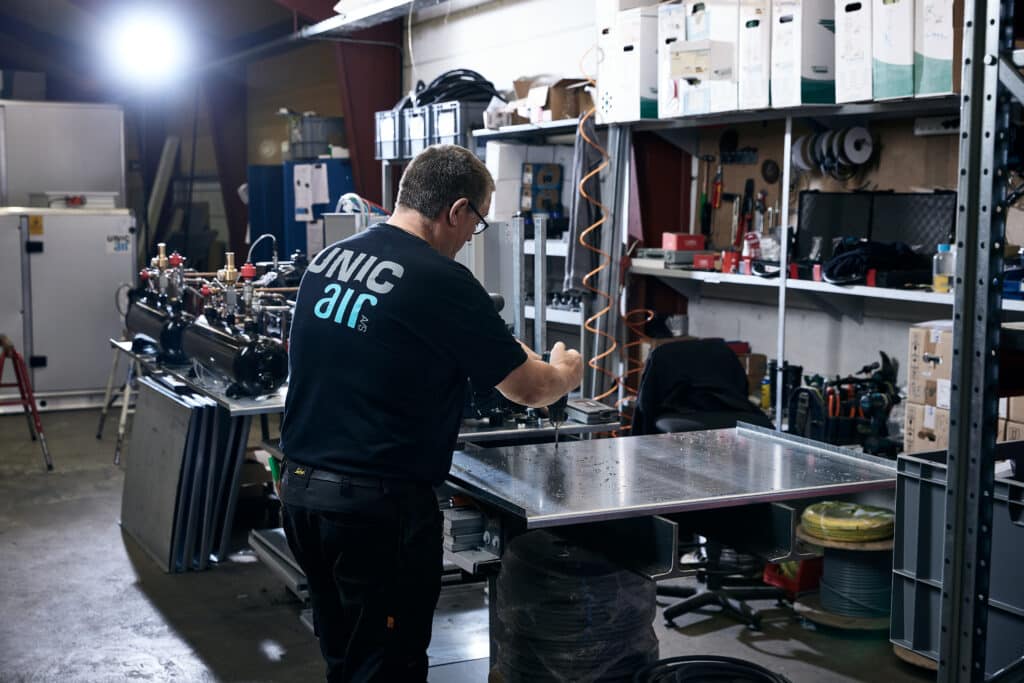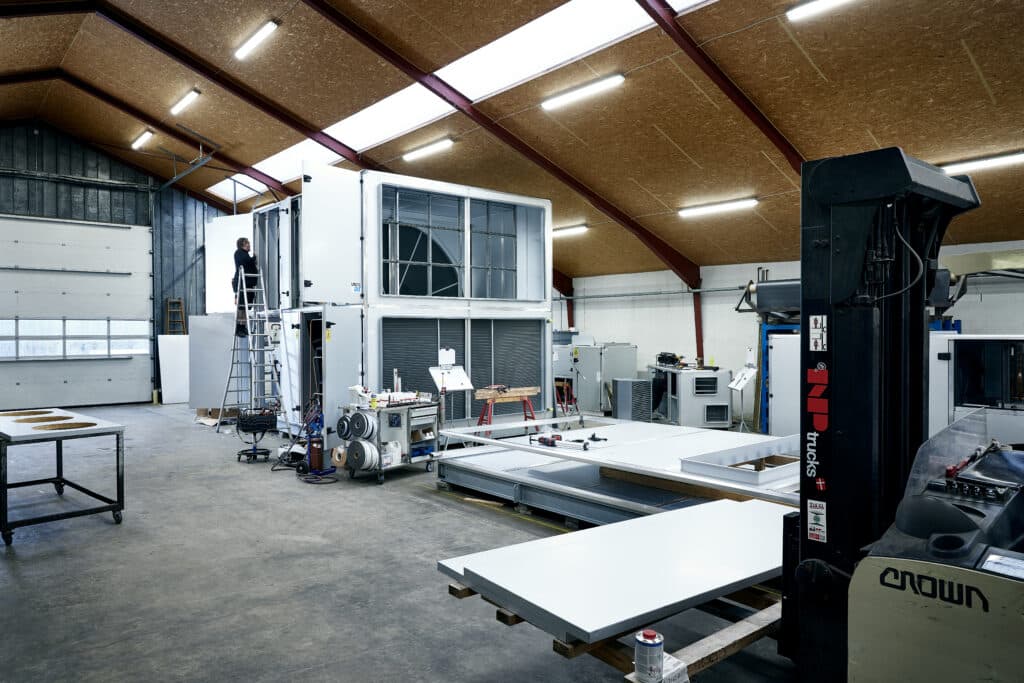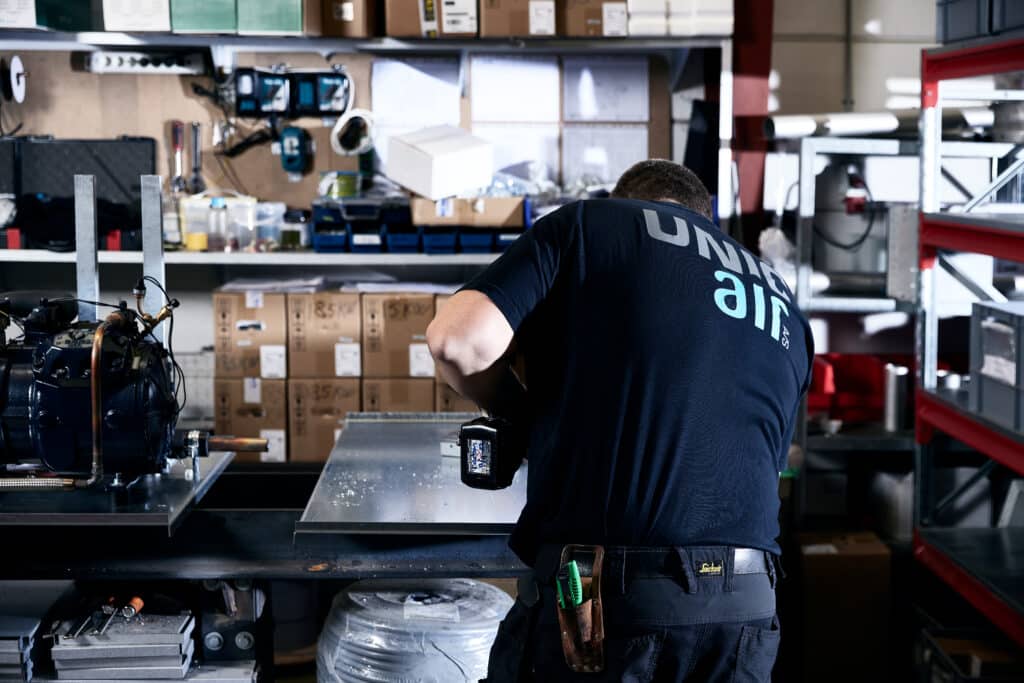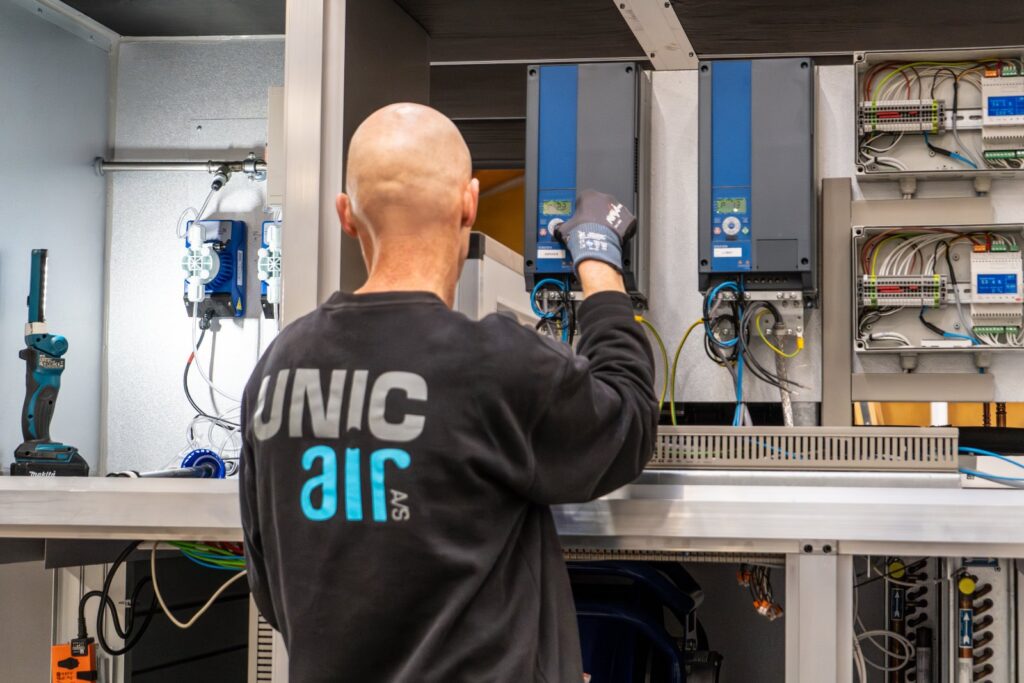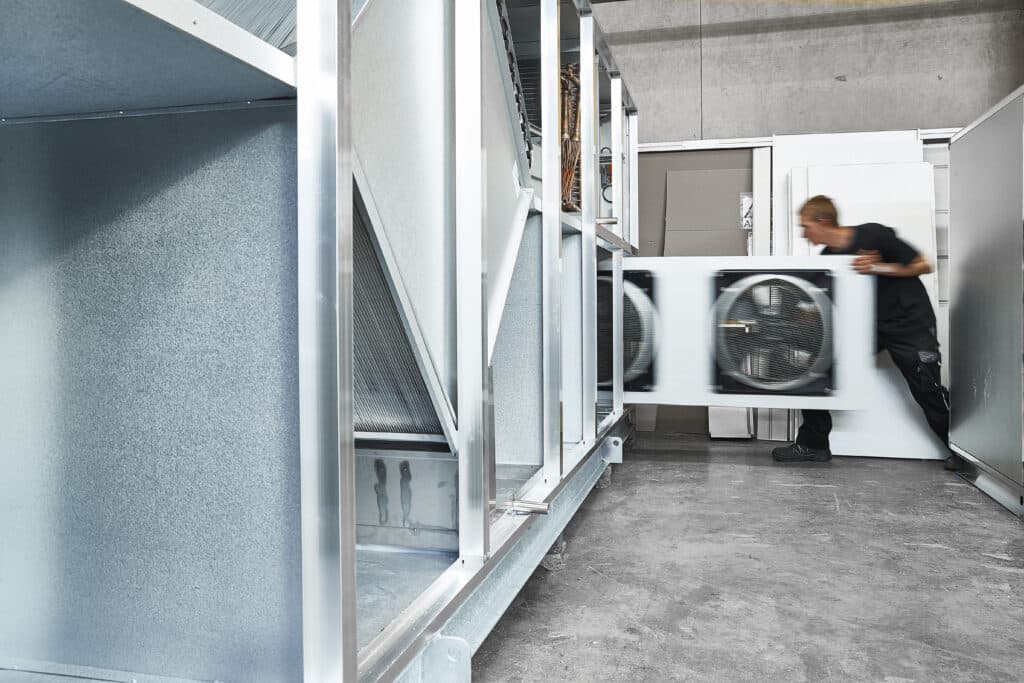People spend up to 80-90% of their time indoors, whether at home, at work, or in transit. Therefore, the indoor climate in our buildings is of critical importance today.
A good indoor climate stimulates the senses, increases focus and concentration, improves productivity, and enhances overall well-being.
Several factors are significant for our perception of the indoor climate, including air temperature, drafts, humidity, and air quality – i.e., the content of particles, gases, and vapors. The installation of a ventilation system allows for the control of all these factors and is thus crucial for maintaining a good indoor climate.
There are two types of ventilation in our buildings today: natural and mechanical ventilation. Natural ventilation occurs through openings in the building, such as windows and vents. With natural ventilation, you cannot control the quality of the incoming air. This means you cannot manage the air temperature, humidity, airflow, or the content of pollutants such as pollen and car exhaust.
The difference between natural and mechanical ventilation
Mechanical ventilation largely consists of a ventilation unit, ducts, fixtures (in the rooms), and automation for control, allowing for the management of the quality of the fresh air supplied to the building. Therefore, the ventilation system is one of the most important elements of good ventilation and crucial for a good indoor climate.
A ventilation system is designed so that the two air streams – fresh air and exhaust from the building – are kept separate, but at the same time, they pass through a heat exchanger that uses the heat from the exhaust to warm the fresh air before it is blown into the building. Efficient heat recovery through the heat exchanger also helps optimize the building’s energy consumption.
Choose the Right Ventilation Unit with Customized Solutions from Unic Air
Air handling units come in many different forms and variations depending on the components chosen. As a standard, a ventilation unit includes filters for both the fresh air intake and the exhaust air. It contains a heat exchanger to transfer heat from the exhaust air to the fresh air during the parts of the year when it is necessary. Last but not least, the ventilation system always includes fans – both in the intake section and the exhaust section of the unit.
Additionally, the ventilation system can be equipped with other components, such as:
- Cooling Coil: For cooling the supply air during the summer. It can also be used for dehumidifying the air. Requires an external cooling unit.
- Heating Coil: For extra heating of the supply air during the cooler part of the year.
- Integrated Cooling Unit: Again, for cooling the supply air during the summer. However, in this case, the cooling system is integrated into the machine.
- Reversible Heat Pump: Can both cool the air in the summer and help heat the air in the winter season.
- Extra Fine Filters: Remove additional small particles or odors from the fresh air.
- Recirculation Damper: Allows for the recirculation of indoor air. This can be used for night heating, saving energy by heating air that is already nearly warm enough from the building. When the building is not in use during the night (e.g., offices, shops, and schools), recirculation can be advantageous since the air is not burdened with high CO₂ levels.
The various components meet different air treatment needs in the ventilation unit. With the many different options we offer at Unic Air ApS, your new ventilation unit, with the right combination, can meet virtually any need.
At Unic Air ApS, our ventilation units are custom-made to be adapted and optimized for each specific project. However, we also have some “standard” units that are specialized for specific needs, such as “Retail Stores and Shopping Centers” or our unit specifically suited for “Fast Food Restaurants” and industrial kitchens.
